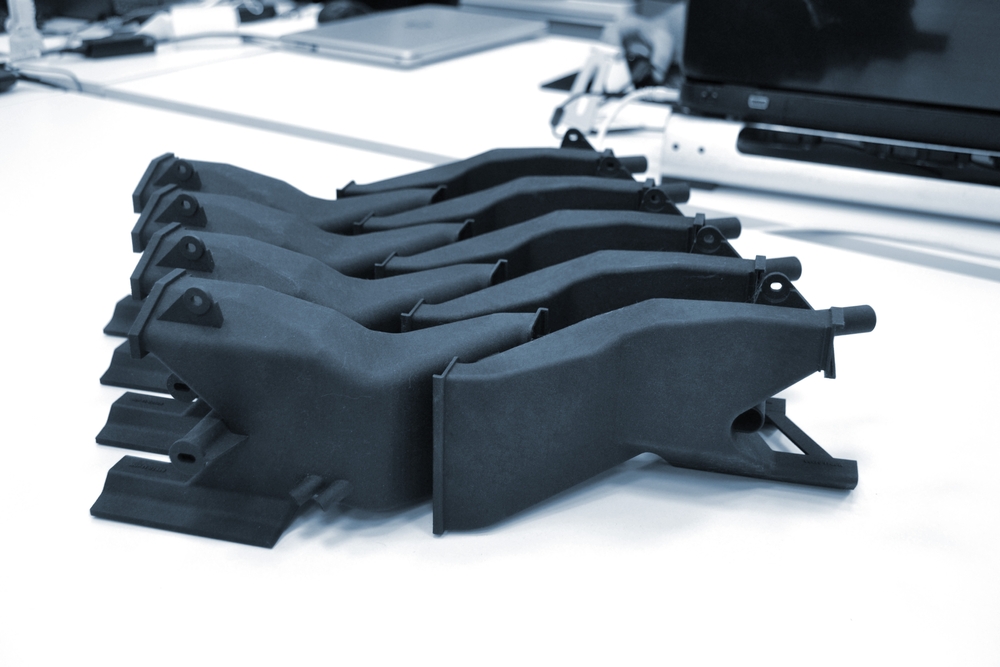

Originally published on fastradius.com on September 14, 2022
Additive manufacturing involves more than just sending your design off to the printer. Because 3D-printed parts often have visible layer lines or rough surfaces, post-processing can be used to ensure your parts look and feel finished — especially if you’re creating an end-use product.
In addition to cleaning, fixing, curing, and coloring, smoothing and sanding are two popular additive post-processing options. Both can result in pieces that look and feel smoother, but they aren’t interchangeable. Each process is different and better suited for different situations.
Post-processing smoothing is ideal for cases where aesthetic appearance is a top priority, but it can also improve your part’s mechanical performance when creating a watertight part.
After cleaning off your part to remove any excess resin, you may need to smooth it to achieve your desired surface finish. There are several different smoothing processes that can be used, depending on the process and material you selected, as well as your desired surface finish. Two of the most common smoothing options that achieve the best results are bead blasting and vapor smoothing.
Bead blasting involves blasting glass or quartz beads at the surface of a part at high pressure. Propelling the beads at a surface cleans and polishes the surface to the desired finish. Fine glass beads leave a “dull” or “satin” smooth finish that’s a cross between a matte and high-gloss finish. Coarse glass beads yield uniform roughness and mask any imperfections.
Vapor smoothing, also known as chemical smoothing or chemical vapor smoothing, involves exposing your part to a vaporized solvent that reacts with the part’s outer layer. The vapor will liquefy and redistribute material on your part’s surface, melting away layer lines and sealing small cavities to create a smooth and glossy surface.
Unfortunately, it’s impossible to control post-processing smoothing completely. It’s all too easy to melt or blast away small features when smoothing your part or to accidentally remove material unevenly, impacting your part’s dimensional accuracy. This means smoothing processes require close observation to achieve an optimal finish while reducing the risk of damage to small features.
Sanding is a post-processing option that removes more material than smoothing. Rough surface finishes are normal in areas where supports are used during the 3D printing process, and prominent layer lines are also relatively common when using fused deposition modeling (FDM). If you have nubs left behind from support structures and need a part that looks and feels smooth, sanding may be the right option to achieve your desired finish.
Much like smoothing, there’s a tradeoff between achieving a smoother surface and an accurate part, and sanding can sometimes remove material unevenly. This can impact your part’s dimensional accuracy.
Manual post-process sanding is also a labor-intensive and time-consuming process. Parts need to first be sanded with low-grit sandpaper, such as 120 grit, before re-sanding with higher grit sandpaper, such as 240 grit, 800 grit, and even 2,000 grit to achieve a desirable finish. Leaving this step to the professionals may cost more money than attempting to sand parts yourself, but experts with the right tools and skillsets will reduce the risks of damage to your parts and will save you time, as well.
Both smoothing and sanding take time, effort, and expertise to achieve quality results and can also be a costly endeavor, especially when done by hand.
While unfinished parts may be acceptable for prototyping and are cheaper and faster to produce, they aren’t usually suitable for end-use products. By engaging in smoothing, sanding, cleaning, curing, fixing, and coloring, you can refine your 3D printed parts, making them stronger (in the case of vapor smoothing FDM parts), smoother, more aesthetically pleasing, and even more functional.
Post-processing smoothing and sanding can significantly improve the look and feel of your part. However, each process has its drawbacks and the potential to create inconsistencies. To ensure your final part or product is as intended, consider partnering with an experienced manufacturer.
If you work with SyBridge, our team will partner with you to refine your design, print your product, and post-process it when necessary. You can also upload your part files to access design insights, view cost analyses, and get a quote instantly. Contact us today to get started and to begin leveraging the benefits of cloud manufacturing.
Forget typical cycle times. We're pushing the boundaries of conformal cooling. While traditional approaches deliver…
Forget typical cycle times. We're pushing the boundaries of conformal cooling. While traditional approaches deliver…
From left to right: Brayden Janak (apprentice); Logan Vifaquain (CNC machining, Programming and CMM); Ron…
SyBridge Technologies is proud to announce we have been awarded the 2023 General Motors Supplier…
Today, designers and engineers are accustomed to working with digital tools in their day-to-day jobs.…
Optimizing Your Injection Molding Process for Cost-Effective Manufacturing Excellence In today’s competitive landscape, manufacturers are…